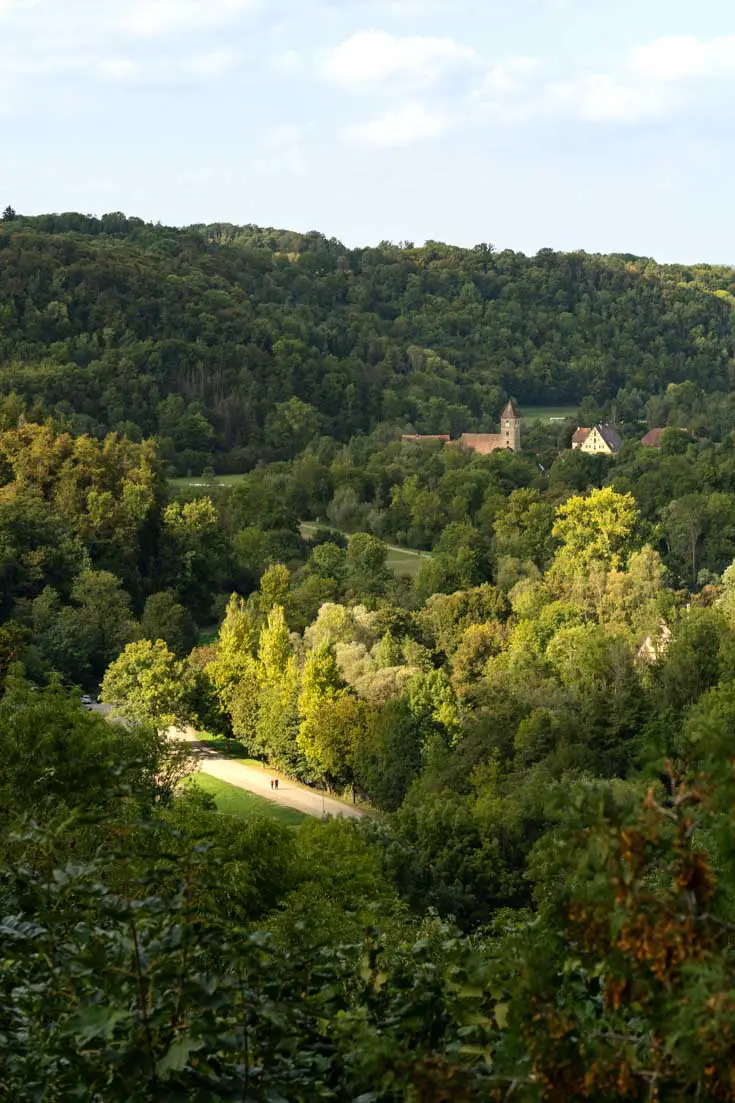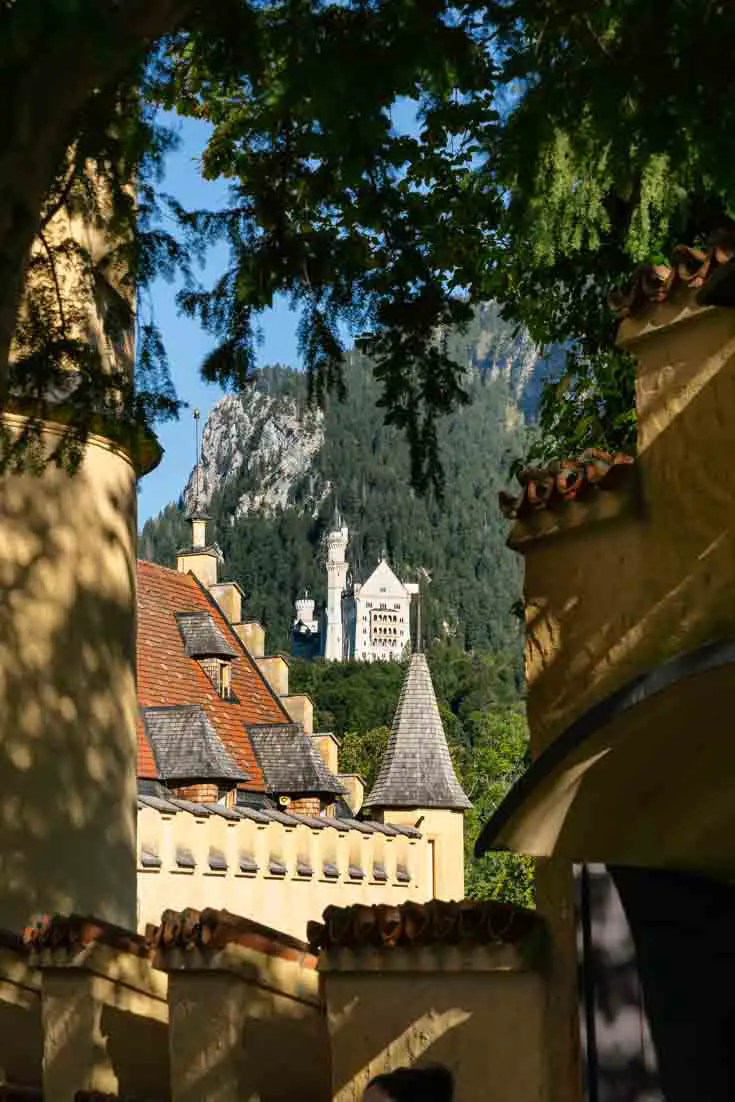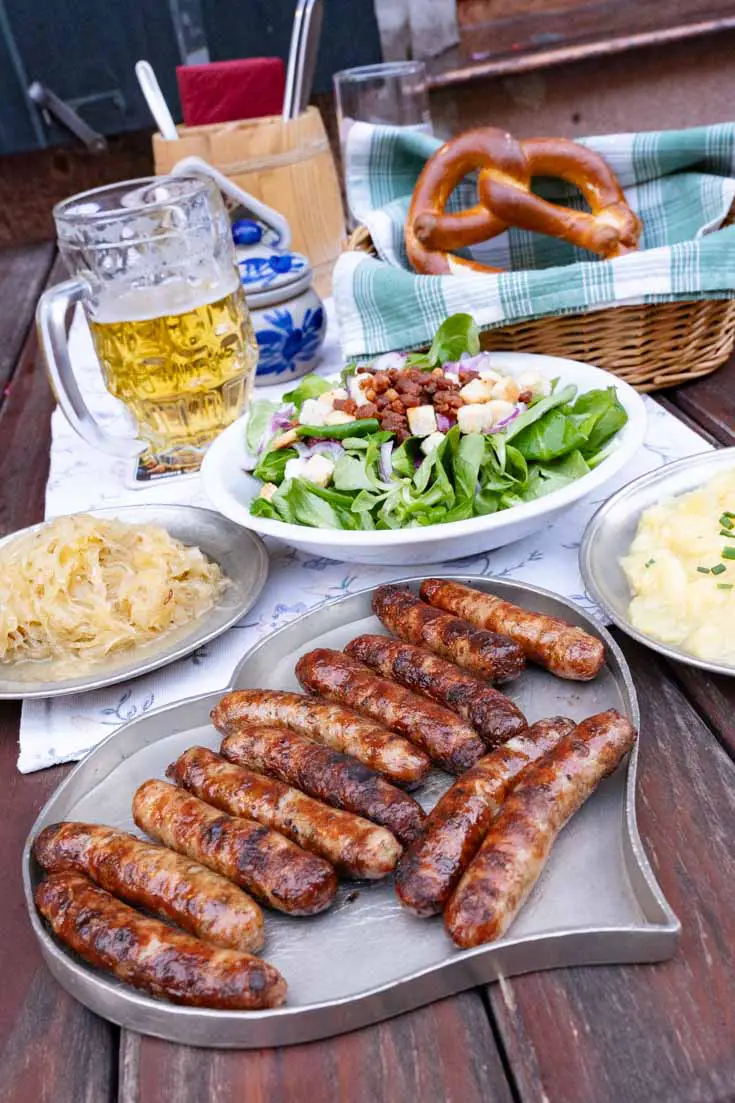Get acquainted with the history, landscapes and culture of Germany with this itinerary, perfect for first-time visitors. Attending Oktoberfest? Use this itinerary to flesh out your time in Deutschland. From Munich to the Alps, Nuremburg to Berlin–this 9-day Germany itinerary will check off bucket-list cities, fairytale castles, medieval towns and scenic landscapes. Los geht’s!
Disclosure: I may earn compensation from the purchase of any product or service linked on this website, at no extra cost to you. I only link to products I use and love, therefore feel comfortable recommending.
Table of contents
Getting to Germany
To make your way to Germany, you have several options for international travel. Whether you’re coming from the USA, Australia, Singapore, or another European country, there are convenient flight and train options available.
Flights from the USA
For travellers from the USA, major airlines offer direct flights to Germany’s main airports, such as Frankfurt, Munich, and Berlin. These non-stop flights provide a convenient and efficient way to reach your destination. You can fly direct to Munich, the first city on our 9-day Germany itinerary, from cities such as Denver, Charlotte, Seattle, NYC, LA San Francisco, Boston and Miami. Alternatively, you can also consider connecting flights through other European cities.
Flights from Australasia
If you’re travelling from Australia or New Zealand, all flights available to Germany have a stop, usually somewhere in Asia or the Middle East. Airlines like Lufthansa and Qantas offer flights from major cities to Frankfurt and Munich. Travellers from or through Singapore, can find direct flights to Germany as well. Airlines such as Singapore Airlines and Lufthansa operate flights from Singapore to Frankfurt and Munich. These flights provide an efficient way to reach Germany.
Trains from within Europe
If you’re already in Europe, you have the option of travelling to Germany by train. The extensive rail network connects Germany with its neighboring countries, making it easy to reach major German cities. High-speed trains like the Eurostar and Thalys offer fast and convenient connections from cities like Paris, Brussels, and Amsterdam.



Getting around Germany
Getting around Germany is convenient and efficient, thanks to its well-developed transportation system. Whether you’re traveling between cities or exploring within a city, there are several options to consider.
Regional travel
For intercity travel, trains are a popular choice. Germany has a great rail network that connects major cities and towns. The trains are comfortable, reliable, and offer scenic views of the countryside. You can easily book tickets online or at the train stations.
Another option for intercity travel is car rental. Renting a car gives you the flexibility to explore at your own pace and visit off-the-beaten-path destinations. Germany has well-maintained roads and highways, making it easy to navigate. Just keep in mind that parking can be limited and expensive in city centers. Also, ensure you select a compact vehicle if you plan to explore smaller, historic towns. Medieval village roads weren’t made for SUVs!
Intracity travel
When it comes to intracity travel, Germany has efficient rail and bus networks, plus some cities also have streetcars/trams. In larger cities like Berlin, Munich, and Hamburg, the train and tram systems are extensive and cover most areas. Buses are also available and provide additional connectivity to areas not served by trains or trams.
It’s important to note that rideshare services like Uber are not as prevalent in Germany, so relying on public transportation is highly recommended. Note that Lyft does not operate in Germany at all.
Overall, getting around Germany is a breeze, whether you choose to travel by train, rent a car, or use public transportation within cities. Plan your itinerary accordingly and enjoy the convenience of exploring this beautiful country.



Best time to visit Germany
Germany is a country that can be visited year-round, but there are certain times that are considered the best for visiting. The best time to visit Germany depends on various factors such as weather, tourist crowds, and seasonal events such as Oktoberfest and the Christmas Markets.
Weather and crowds
One of the most popular times to visit Germany is during the summer months, from June to August. The weather is generally warm and pleasant, making it ideal for outdoor activities and exploring the cities. However, this is also the peak tourist season, so expect larger crowds and higher prices for accommodations and attractions. Peak season runs right through to the end of Oktoberfest which concludes in the first week of October.
If you prefer milder weather and fewer tourists, consider visiting Germany in the spring or autumn. The months of April, May, September, and October offer pleasant temperatures and beautiful scenery. Late spring is particularly lovely with blooming flowers and green landscapes, while fall months bring vibrant autumn colours.
For those who enjoy winter sports and Christmas markets, visiting Germany during the colder months can be a magical experience. December is especially popular with its festive atmosphere and traditional Christmas markets in cities like Dresden, Stuttgart, and Nuremberg. It’s important to note that the weather can vary across different regions of Germany, so it’s a good idea to check the specific climate of the areas you plan to visit.
Events and festivals
Additionally, consider any major events or festivals happening during your desired travel dates, as they can greatly enhance your experience in Germany. Overall, the best time to visit Germany is subjective and depends on your preferences. Whether you’re seeking warm weather, avoiding crowds, or immersing yourself in seasonal events, Germany offers something for every traveller throughout the year.



9-Day Germany Itinerary
To make the most of your 9-day trip to Germany, here is a day-by-day breakdown of destinations and activities that we recommend you include in your itinerary. These are 9 full days of sightseeing. You will need to add travel days to either end depending on your point of origin and how long it will take you to travel to and from Germany. Remember you can always reverse the order if you need to start in Berlin for logistical reasons.
Day 1 – Munich
Begin your time in Munich (München in german) with a walking tour. We find walking tours great for covering some of the must-sees, helping get oriented with a new city and getting recommendations from local guides. Whether you are exploring guided or self-guided, Munich is very walkable. You can reach most of the top attractions on foot.
You’ll likely spend most of your time in the historic city center. It’s important to note that 50-60% of Munich was decimated by WWII bombing and much of the Alt Stadt (old town) is reconstructed. Some of the older buildings that did survive include those around Marienplatz with its famous glockenspiel, and the landmark churches including the Gothic-style Frauenkirche.
Following your walking tour, spend 2-3-hours at the Munich Residenz, a former royal palace. There’s lots to see here, so give yourself plenty of time.
Get accommodated in Munich.
Day 2 – Munich
On this day in Munich, spend time visiting the world-class Museums, take in a beer garden or five and visit the English Garden, Munich’s answer to Central Park.
Make time to climb to one of the towers in the city for a skyline view. Options include St Peter’s Church, Frauenkircher South Tower or the New Town Hall Tower. Check their websites to confirm booking procedure, cost and the number of steps or availability of an elevator.
Alternatively, this is your Day 2 is your opportunity to spend a day at Oktoberfest.
Spend the night in Munich.
Day 3 – Dachau and Neuschwanstein Castle
I hope you’re not nursing a hangover because we have a lot to cover today. After breakfast, pick up your rental car in downtown Munich. Head for Dachau, about a 35-minute drive. Ideally, you would reach Dachau Concentration Camp right upon its 9am opening time. Allow 2-3-hours to explore the Camp via audio-guide.
Have a quick lunch in the town of Dachau and drive south for 2-hours to reach the foot of the Bavarian Alps. Find parking in the town of Hohenschwangau. From here you can explore the two Castles Hohenschwangau and Neuschwanstein (you know it, the big “Disney” castle that’s on all the postcards).
If you wish to see the insides of either or both Castles, you’ll need to join a tour. There are no self-guided options for the interior but you can wander the grounds without a ticket or guide.
In order to keep to this itinerary, you’ll need to pay a little extra to book online for the Castle tours in advance. During the busier months, walk-up tickets sell out by 10am, so you’ll need to secure your timeslot before you arrive. More tips and tricks for visiting these two Castles coming in a full guide soon.
Overnight in Schwangau or the larger nearby town of Füssen.



Day 4 – Bavarian Alps and Rothenburg ob der Tauber
If the weather is good, squeeze in a short and scenic Alpine walk across the border to Austria to start your day. The Baumkronenweg at Walderlebniszentrum, just outside Füssen, is a treetop boardwalk with gorgeous views of the Lech River valley and Bavarian Alps. The 480-m (one-way) boardwalk crosses the German-Austrian border, marked by red, white and blue lines. There are several walking paths, but if you only have time for one, this would be my pick. Entrance is €5 for adults and there is limited parking, so get there early.
After your walk, drive about 2.5-hrs to the medieval town of Rothenburg ob der Tauber. Wander through the cobblestone streets, admire the well-preserved half-timbered houses, and visit the beautiful gardens in the archaeological ruins of Rothenberg Castle.
You might have heard of the highly recommended Night Watchman Tour in Rothenburg. In fact, it has become so popular that even during our October visit it was difficult to take this tour. There are no bookings and dozens upon dozens of tourists wanting to join. While no one is turned away, many end up leaving because the group is impossibly big. Don’t rely on the Night Watchman Tour to learn about Rothenburg. There are plenty of daytime walking tours you can join also. We took a walking to tour and then did a self-guided lap of the city wall.
Spend the evening in Rothenburg.
Day 5 – Nuremberg
Continue your Germany itinerary in Nuremburg (Nürnberg in German), a city rich in history and culture.
For art supply-enthusiasts like me, make a stop in the town of Stein (just outside Nuremburg), to visit Faber-Castell HQ. The Factory has a visitors’ centre and shop. There are several tours on offer showcasing the factory, museum and castle. They are only on select days and do sell out, so book in advance.
Before you return your rental car, visit the Nazi Party Rally Grounds and/or the Memorium Nuremberg Trials to learn about the city’s role during World War II. These two sights are in differing outer parts of the city, so you will need time and/or transport to visit. You can use public transport, but it will take longer.
Return your rental car, from now on we’ll make use of Germany’s rail network.
Spend the night in Nuremberg.
Day 6 – Nuremberg
Spend the day taking a walking tour, visiting Nürnberg Castle and walking along the city walls. During the holidays you’ll also want to spend time exploring one of Europe’s most notable Christmas Markets.
For dinner, don’t miss the chance to try the famous Nürnberger sausages (Nürnberger Rostbratwurst) at historic institutions such as Zum Gulden Stern, Bratwurst Röslein and Bratwursthäusle bei St. Sebald. Make sure you pick up some lebkuchen too (baked treat somewhat comparable to gingerbread) for dessert.
Overnight in Nuremberg.



Day 7 – Berlin
Take a morning ICE (InterCity Express) train to Berlin, which will take 3-4-hours.
During your first afternoon in Berlin, visit the Reichstag Building (German parliament) rooftop terrace and dome. You will need to book a time online, in advance. If you haven’t booked prior to arriving in Berlin, you may still be able to secure a spot if you go straight to the Berlin Pavilion and register. The Pavilion is located on Scheidenmannstrasse, adjacent to the Reichstag on the northern edge of Tiergarten. Allow a couple of hours to accommodate security procedures and the full audio tour at the Reichstag.
Spend the night in Berlin.
Day 8 – Berlin
Round out your Germany itinerary in the vibrant capital of Berlin. Visit iconic landmarks such as Brandenburg Gate, the Berlin Wall including East Side Gallery, and Checkpoint Charlie. Berlin has a lot of history to digest. Again, we recommend taking a walking tour for key sights and historical context that will frame the rest of your explorations.
Overnight in Berlin.
Day 9 – Berlin
Explore the world-class museums on Museum Island (Museumsinsel in German). This UNESCO World Heritage Site encompasses five museums constructed between 1824 and 1930. Not only is the architecture impressive but so are the contents of the Museums which include the Altes Museum, Neues Museum, Alte Nationalgalerie, Bode Museum and the Pergamon Museum.
Just make sure you avoid the first Sunday of the month when museum admissions are waived, but the lines to enter are around the block. Also note, the extraordinary Pergamon Museum is going to be closed for the foreseeable future for renovations.
Bunk down in Berlin for the evening.



Say “ja” to Germany, and use this 9-day itinerary to give you a taste of its diverse landscapes, rich history, and vibrant culture.
Peace, love & lebkuchen,
Madam ZoZo




